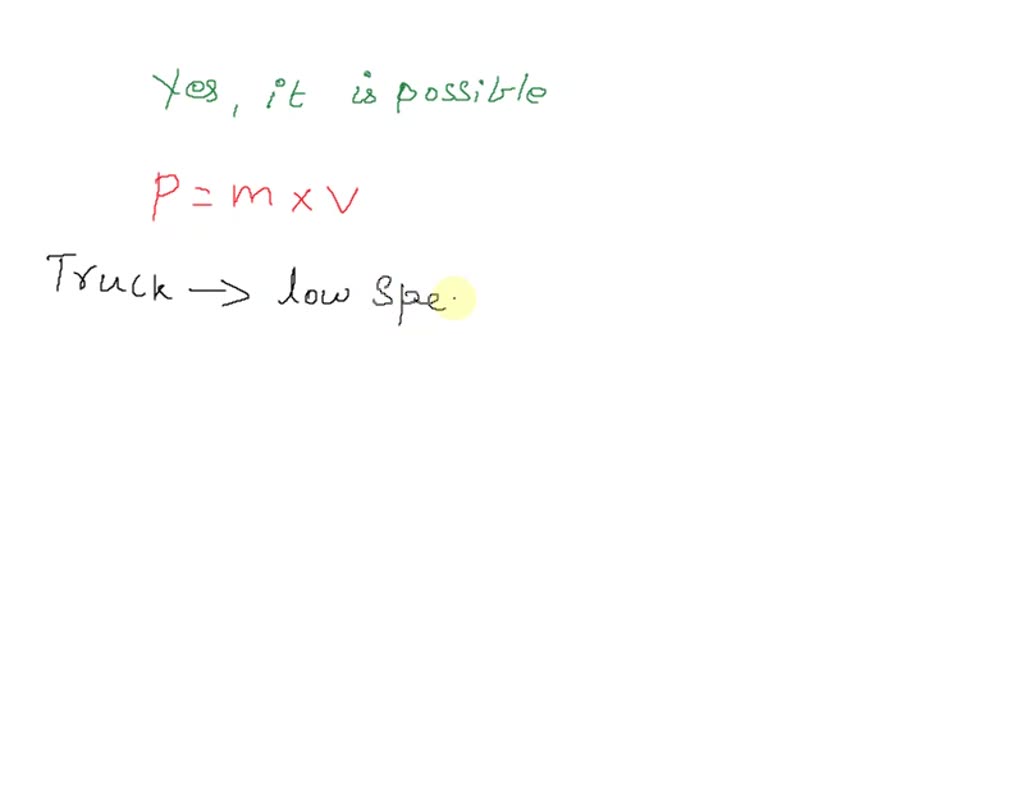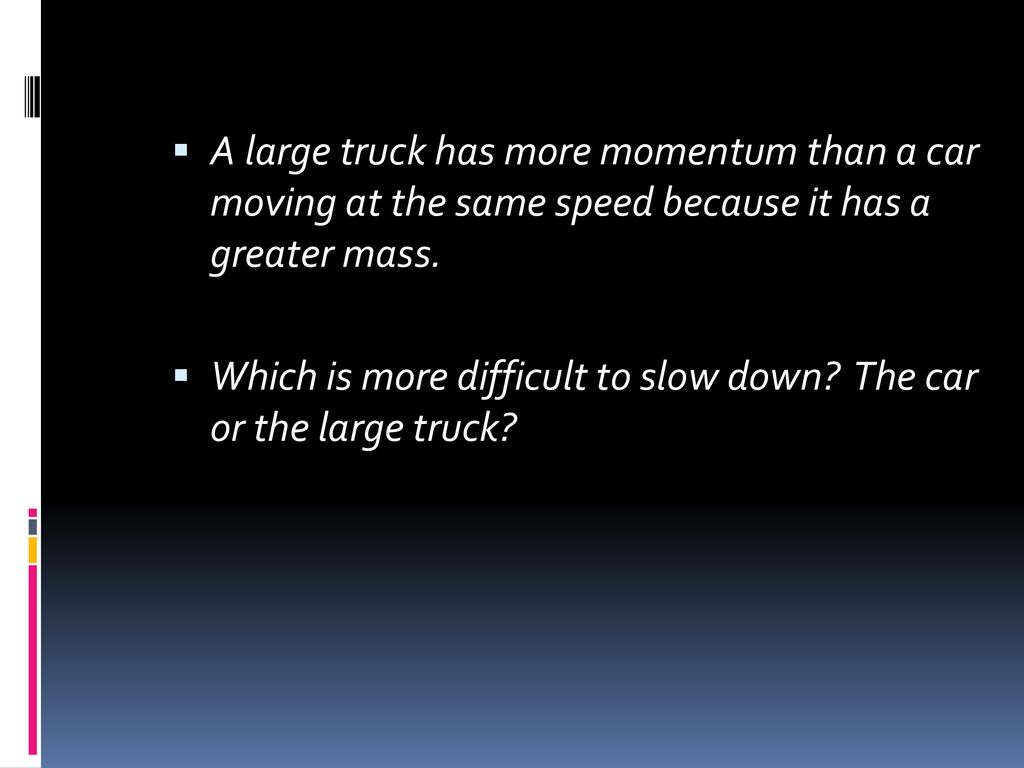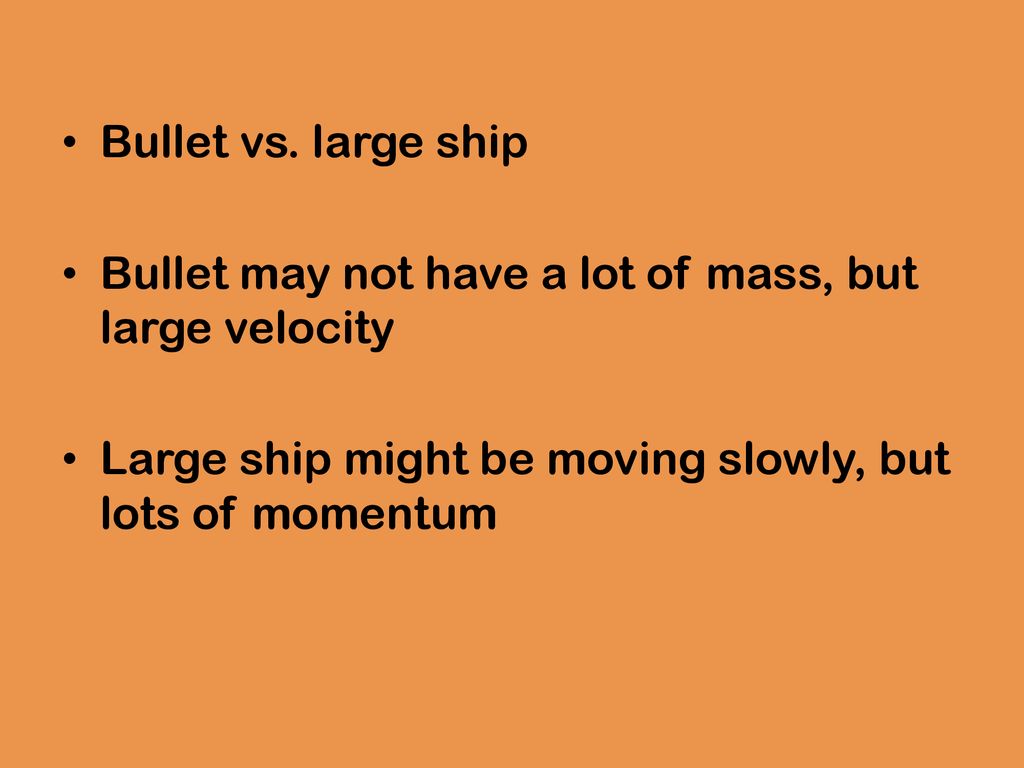Can A Bullet Have The Same Momentum As A Truck

The image is visceral: a speeding truck, a tiny bullet. The question seems almost ludicrous, a thought experiment designed to highlight the disparities in mass and scale. Can a bullet, an object typically associated with lethal speed but negligible weight, truly possess the same momentum as a multi-ton truck? The answer, surprisingly, delves into the fundamental principles of physics and challenges our intuitive understanding of motion.
This article examines the complex interplay of mass and velocity that defines momentum, exploring the theoretical possibilities and practical limitations of achieving equivalent momentum between a bullet and a truck. By consulting physics experts, analyzing ballistic data, and referencing established scientific principles, we will dissect the scenario, providing a factual and balanced perspective on a seemingly impossible proposition. We will analyze the factors influencing momentum, including the velocity required and the energy implications, and differentiate between kinetic energy and momentum.
Understanding Momentum: The Basics
Momentum, in physics, is defined as the product of an object's mass and its velocity. The formula is simple: p = mv, where 'p' represents momentum, 'm' represents mass, and 'v' represents velocity. This means that an object with a large mass moving slowly can have the same momentum as an object with a small mass moving very quickly.
Therefore, even though a truck has significantly more mass than a bullet, the bullet could theoretically achieve the same momentum if its velocity is high enough. The key lies in quantifying just how high that velocity needs to be and whether it's physically attainable.
The Math: Calculating Equivalent Momentum
Let's consider a typical pickup truck with a mass of 2,500 kg. A common 9mm bullet has a mass of approximately 0.0075 kg (7.5 grams). To calculate the velocity the bullet would need to match the truck's momentum at, say, 10 m/s (approximately 22 mph), we can set up a simple equation.
Truck's Momentum: p = 2500 kg * 10 m/s = 25,000 kg m/s. Bullet's Required Velocity: v = p / m = 25,000 kg m/s / 0.0075 kg = 3,333,333.33 m/s. That equates to a bullet speed of over 7.4 million miles per hour.
This calculation clearly demonstrates the monumental challenge. Bullets fired from conventional firearms reach velocities far lower than this, typically ranging from 300 to 1200 m/s. Achieving the necessary velocity to equalize momentum with a truck moving at even a modest speed is, with current technology, an insurmountable obstacle.
The Role of Kinetic Energy
While momentum focuses on mass and velocity, kinetic energy, or the energy of motion, is also crucial to consider. Kinetic energy is calculated using the formula KE = 1/2 mv², where 'm' is mass and 'v' is velocity.
In our scenario, even if a bullet could theoretically match the truck's momentum, its kinetic energy would be astronomically higher. This means the bullet, despite having the same momentum, would impart a vastly greater amount of energy upon impact, potentially causing significantly more damage to a target than the truck would at its lower speed.
Real-World Limitations and Technological Barriers
The velocity requirement highlights the major practical barriers. Currently, no known projectile technology can propel a bullet to such speeds. Furthermore, even if such a technology existed, the energy required to accelerate the bullet to that velocity would be immense.
Air resistance would also become a significant factor. At such extreme speeds, the bullet would likely disintegrate due to friction with the atmosphere, preventing it from reaching its target with the necessary momentum. The heat generated would be immense, further challenging the bullet's structural integrity.
Expert Perspectives
According to Dr. Emily Carter, a professor of Physics at MIT, "While theoretically possible, achieving momentum parity between a bullet and a truck is practically impossible with current technology. The energy requirements are simply too high, and the materials science challenges are immense."
Dr. Robert Jackson, a ballistics expert from the National Institute of Justice, adds, "We focus on optimizing bullet design for controlled energy transfer, not on maximizing velocity to such unrealistic extremes. Momentum is important in terminal ballistics, but it is only one piece of the puzzle."
Beyond the Theoretical: Applications of Momentum
While achieving equal momentum in this specific scenario is unrealistic, understanding momentum principles is crucial in various fields. This includes designing safer vehicles, improving projectile technology, and even understanding the movement of celestial bodies.
For example, crumple zones in cars are designed to increase the time of impact during a collision, reducing the force experienced by the occupants. This is a direct application of the impulse-momentum theorem, which states that the change in momentum of an object is equal to the impulse applied to it.
Conclusion: A Matter of Perspective
In conclusion, while a bullet can theoretically have the same momentum as a truck, the velocity required to achieve this equivalence is far beyond current technological capabilities. The energy requirements, atmospheric limitations, and material science challenges present insurmountable obstacles.
The question serves as an engaging thought experiment, highlighting the relationship between mass, velocity, and momentum. It reinforces the importance of understanding fundamental physics principles and the limitations imposed by real-world constraints. Although the scenario seems far-fetched, it underscores the power of physics to describe and, ultimately, to explain the world around us.


















